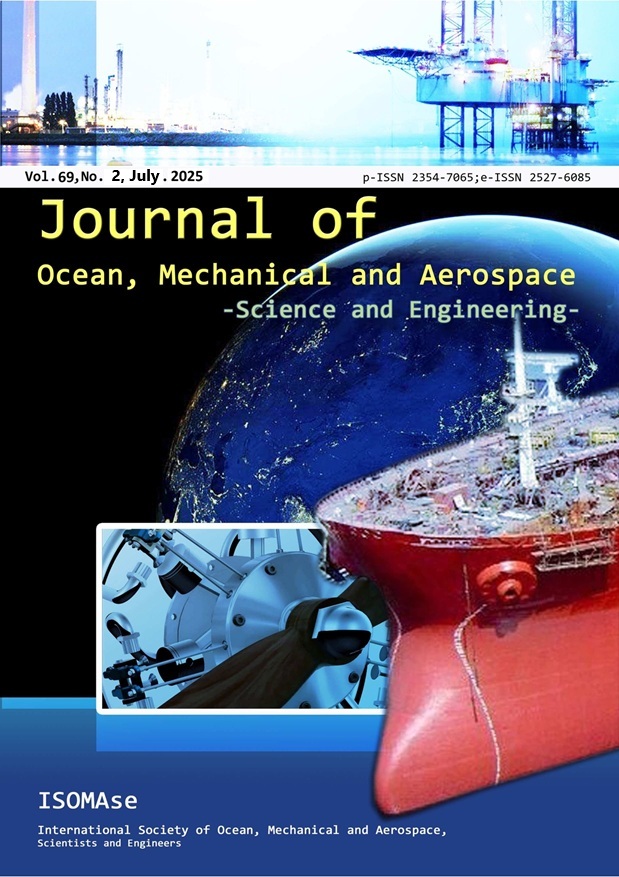Numerical Study of Finite Element Analysis (FEA) of Stress and Deformation in Strainer
Abstract
Transportation of hydrocarbon gas in industry often carries contaminants such as scale, rust, and weld metal particles that can disrupt the flow and damage components such as compressors. Strainers are used to filter impurities before the fluid enters the main system. At high flow rates, strainers, especially perforated plates, are susceptible to structural damage. Because experimental tests are expensive and risky, Finite Element Analysis (FEA) simulations are used. This study analyzes the effect of variations in methane gas flow rates on the strength of carbon steel strainers with plate thicknesses of 0.8 mm, 1 mm, and 2 mm. The tested velocities were 7.59 m/s, 9.59 m/s, and 11.59 m/s at a pressure of 10 bars and a temperature of 55?. The results showed the highest stress at the base of the strainer: 32,826 N/m2 (0.8 mm), 30,472 N/m2 (1 mm), and 21,975 N/m2 (2 mm). The maximum deformations occurred at the strainer tip: 2.35×10-8 m, 2.91×10-8 m, and 2.82×10-8 m. All values are below the yield strength limit of carbon steel (2.5×108–5×108 N/m2), indicating a safe design against high flow loads.















